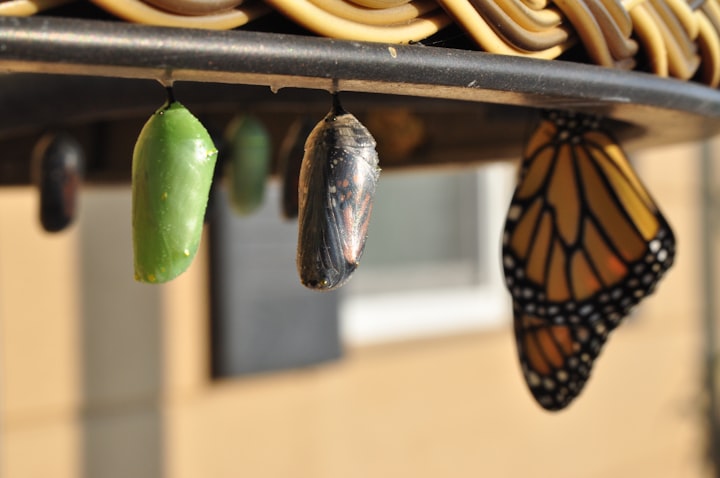The 7 Best Historic Sites in Georgia
Continue reading for our picks for the best Georgia state historic sites to visit, ranging from strategic forts and important battlefields to Native American landmarks and a museum dedicated to the Georgia gold rush.

Georgia, the fourth state to ratify the United States Constitution in 1788, has a rich and diverse history.
The state is known for its sprawling oak trees in Savannah, rolling Blue Ridge Mountains in North Georgia, and an economy based primarily on agriculture.
In 1733, English philanthropist James Oglethorpe established the state of Georgia in order to ship raw materials back to London.
As a supporter of prison reform, he invited many of the state's poorest colonists, hoping that they would help clear the way for development.
Georgia has been at the centre of several wars, serving as a defensive position against Spanish invaders and British soldiers seeking a foothold on the coast.
Continue reading for our picks for the best Georgia state historic sites to visit, ranging from strategic forts and important battlefields to Native American landmarks and a museum dedicated to the Georgia gold rush.
1. Etowah Indian Mounds State Historic Site
The Etowah Indian Mounds in Cartersville, Georgia, are one of Georgia's oldest historic sites. The mounds were designated in 1964 and have been dated back to 1000 A.D.
Six Mississippian mounds were built near the north shore of the Etowah River by the Mississippians. The chief's residence, a temple, and burial grounds were all housed on the three larger mounds.
The site was inhabited after the Mississippians by the Muscogee Creek people, who were pushed out by the Cherokee in the late 18th century.
The thickness of ceramics found on the site, as well as markings or other distinguishing features on the clay pots, were used by archaeologists to determine these dates.
Visitors to the Etowah Indian Mounds Historic Site can now see the original mounds, as well as a handicapped-accessible museum and gift shop, picnic tables, and riverside benches.
There are also original fish traps, borrow pits, and defensive ditches on the property, as well as a short nature trail lined with wildflowers.
2. Dahlonega Gold Museum State Historic Site
The Dahlonega Gold Museum is one of Georgia's most popular historic sites.
Dahlonega is best known for being the epicentre of the Georgia Gold Rush (not to mention some great Dahlonega wineries).
The discovery of gold in Lumpkin County prompted a rush of prospectors to the North Georgia mountains. They were sending hundreds of thousands of dollars in gold to the Philadelphia Mint by 1830.
The Dahlonega branch of the United States Mint operated from 1838 to 1861, coining over $6 million in gold during that time. The museum now houses a complete set of gold coins minted in the 1800s.
A gold nugget weighing more than 5 ounces, as well as a hydraulic cannon and nozzle used to blast soil from the surrounding mountainsides, are also on display at the museum.
Some exhibits at the Dahlonega Gold Museum are located on the second floor, making them inaccessible to wheelchairs.
3. Hardman Farm State Historic Site
Captain James Nichols built the Hardman Farm State Historic Site just south of Helen, Georgia, in the 1870s. The house was named "West End" because of its location in relation to the Nacoochee Valley.
The farm was last owned by the family of Dr. Lamartine Hardman, Georgia's governor from 1927 to 1931.
Today, guided tours of the house include the bedroom where Nichols' daughter Anna Ruby, the namesake of nearby Anna Ruby Falls, once slept.
Visitors will also have the opportunity to see the property's horse barn, cow pasture, and a large dairy barn where milk was processed and transported in the early 1800s.
This Georgia historic site is also known for the gazebo-topped Nanoochee Indian Mound, which served as a burial site. It was most likely constructed and used long before the Cherokee Indians arrived in Georgia.
During the Christmas season, the property's living history tours provide a unique opportunity to see what a Christmas in Helen GA might have looked like 150 years ago.
4. New Echota State Historic Site
The New Echota Georgia state historic sites, one of Georgia's most well-known historic sites, is located near the Oostanaula River in Calhoun, Georgia.
The Cherokee national legislature established New Echota as the tribal capital, as well as the first Cherokee newspaper and Supreme Court house.
In 1835, a faction led by Major Ridge met with US government officials in New Echota, eventually signing a treaty that resulted in the forced removal of the Cherokee people.
They claimed to represent the entire tribe, but in reality were a small group of less than 500 people.
The Treaty of New Echota is regarded as the start of the Trail of Tears. Many Cherokee warriors gathered at New Echota to fight after it was ratified by the Senate and signed into law by President Andrew Jackson.
The Native American historic site now includes 12 original and reconstructed structures, including the Council House, Court House, Print Shop, Inn, and several private homes.
Visitors can also view interpretive exhibits, buy souvenirs, and hike trails that lead to New Town Creek and a small beaver pond.
5. Pickett’s Mill Battlefield State Historic Site
Pickett's Mill Battlefield State Historic Site, located in Dallas, Georgia (just west of Kennesaw), is one of the best-preserved Civil War battlefields in the United States.
Visitors can learn about the Confederate victory that delayed the Union advance into Atlanta on approximately 765 acres.
The Union Army, led by General Howard, attempted to avoid the Confederate Army. However, 10,000 Confederate troops, led by General Cleburne, waited at Pickett's Mill.
On May 27, 1864, over 14,000 Union troops clashed with Confederate soldiers on the battlefield. The bloody battle lasted well into the night, but the Confederate Army held their ground.
Today, visitors to the historic site can see troop roads, earthen works built by the soldiers, and a ravine where hundreds of soldiers died.
There is also a museum, a pioneer cabin, 4 miles of hiking trails, a group shelter, and picnic tables.
6. Traveler’s Rest State Historic Site
The Traveler's Rest State Historic Site in Toccoa, Georgia, was built in 1815 by James R. Wyly and is the preserved site of a stagecoach inn and plantation.
Wyly built the inn along the Unicoi Turnpike, a popular highway in the Appalachian Mountains near the South Carolina border.
During the Georgia Gold Rush, miners likely stopped at Wyly's inn before continuing on to Dahlonega.
Devereaux Jarrett, Wyly's neighbour, bought the inn in 1833 and combined it with his existing plantation to double its size. The once-quaint inn was transformed into a 14,400-acre plantation along the scenic Tugaloo River.
The Jarrett family owned the property for over a century before it was purchased by the state of Georgia in 1955. In 1964, it was designated as a Georgia historic landmark.
The inn and plantation buildings, as well as many of the original antique furnishings, are on display at this Georgia historical site. The inn has six chimneys, a post office, and lovely quilts in the guest rooms.
Although the inn is no longer in operation, it is open for self-guided tours seven days a week. The museum is also open and frequently hosts temporary exhibitions.
7. Little White House State Historic Site
Franklin D. Roosevelt's Little White House Historic Site, located in Warm Springs, GA, preserves his mountain home exactly as he left it.
FDR frequently visited Warm Springs after being diagnosed with polio at the age of 39. He was looking for alternative treatments, and the naturally heated spring water in the area helped him feel better.
He had the Little White House built while still Governor of New York in 1932. One year later, he defeated Herbert Hoover in one of the most lopsided presidential victories in American history.
Warm Springs also inspired some of FDR's New Deal programmes, such as the Rural Electrification Commission. (He also conceptualised the Blue Ridge Parkway.)
The Little White House Historic Site now houses a museum containing mementos from FDR's life, such as his 1938 Ford convertible (complete with hand controls), his stagecoach, and a 1930s radio broadcasting his Fireside Chats.
The "Unfinished Portrait" is another popular attraction at the museum. Roosevelt died in 1945 after suffering an intracerebral haemorrhage while posing for the portrait.
About the Creator
Amit Kumar
Full-time thinker & part-time writer...






Comments
There are no comments for this story
Be the first to respond and start the conversation.